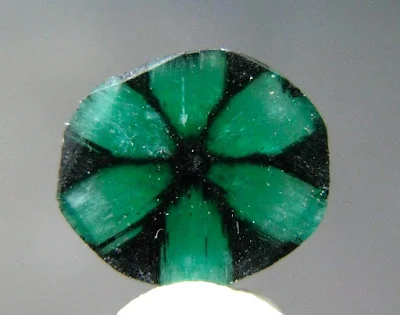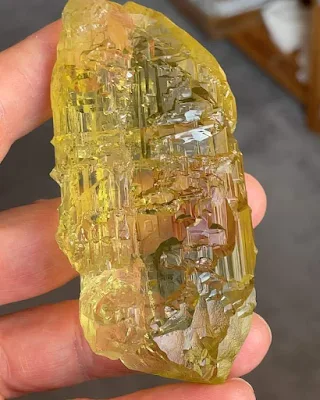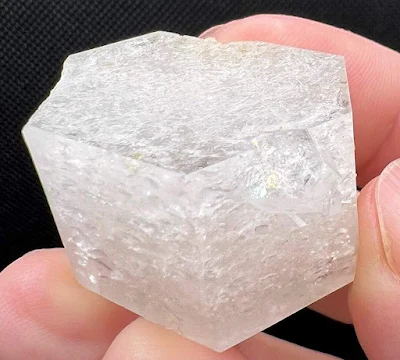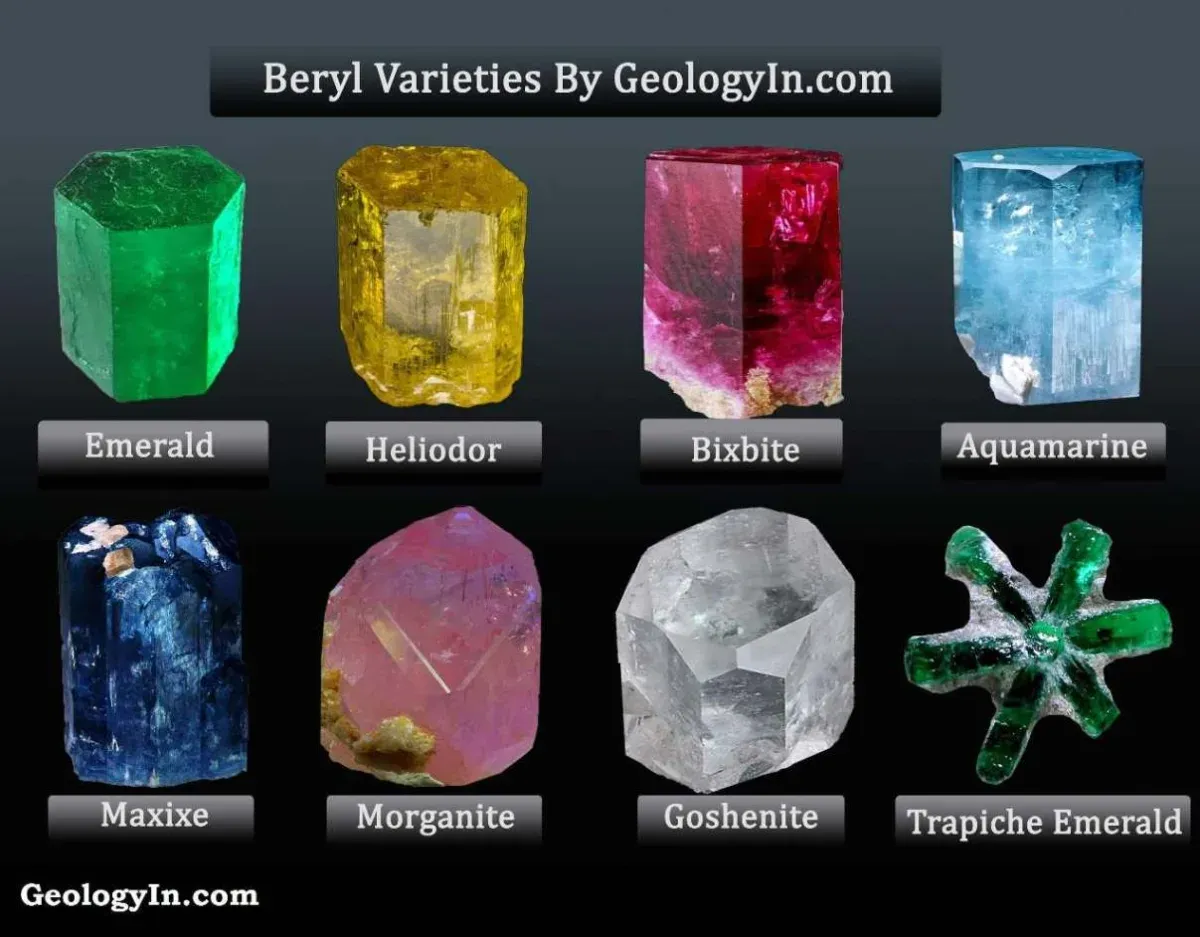Beryl: Types and Colors of Beryl
Beryl is a mineral species that occurs in a variety of colors—including pink, red, green, blue, yellow, and colorless—due to trace impurities. Its six primary gemstone varieties are aquamarine (blue to blue-green), red beryl (red), emerald (green), heliodor (yellow), morganite (pink to peach), and goshenite (colorless). These colors result from elemental substitutions within its crystal structure.
Composed of beryllium aluminium cyclosilicate Be₃Al₂Si₆O₁₈, beryl is the primary source of beryllium and is highly valued in gemology for its durability, with a Mohs hardness of 7.5–8. Each variety of beryl has its unique appeal and value, making it one of the most significant and popular gemstone families in the world.
 |
| Beryl Family colors |
Beryl is a common mineral, and it is widely distributed in nature. It is found most commonly in granitic pegmatites, but also occurs in mica schists, such as those of the Ural Mountains, and in limestone in Colombia. It is less common in ordinary granite and is only infrequently found in nepheline syenite. Beryl is often associated with tin and tungsten ore bodies formed as high-temperature hydrothermal veins.
In granitic pegmatites, beryl is found in association with quartz, potassium feldspar, albite, muscovite, biotite, and tourmaline. Beryl is sometimes found in metasomatic contacts of igneous intrusions with gneiss, schist, or carbonate rocks. Common beryl, mined as beryllium ore, is found in small deposits in many countries, but the main producers are Russia, Brazil, and the United States.
Beryl: Varieties and Colors
Beryl is colorless in pure form; it is the many different impurities that give beryl its varied coloration.
Aquamarine
Aquamarine is a light bluish green form of beryl. Its specific color comes from impurities of iron that lie within the beryl. The exact color of the aquamarine itself is dependent on where the impurities are located in the beryl. Aquamarine can be a very expensive gemstone. The most sought after color is pure blue.
The pale blue color of aquamarine is attributed to Fe2+. Fe3+ ions produce golden-yellow color, and when both Fe2+ and Fe3+ are present, the color is a darker blue as in maxixe.
It possesses a hardness of 7.5-8 on the Mohs scale, making it suitable for most jewelry applications.
The name "aquamarine" is derived from the Latin words for "water" and "sea," reflecting its oceanic colors.
Aquamarine deposits are found worldwide, with major sources including Brazil, Colombia, Madagascar, and Russia. The gem is typically mined from pegmatites, igneous rock formations known for containing large crystals.
 |
| Aquamarine crystals with a schorl crystal |
Maxixe
Maxixe, also known as Maxixe-type beryl, is a beryl variety exhibiting an intense, saturated blue color (420-470 nm) exceeding that of natural aquamarine.
Originally (since 1917) it came only from the Maxixe Mine in Minas Gerais (Brazil). More recently beryl from multiple sources has been sold as 'Maxixe', which has lead to many in gemmological circles preferring to use the terms 'Blue Beryl' or 'Maxixe-type beryl'.
Unfortunately, Maxixe's vibrant blue color is unstable and fades upon exposure to sunlight or heat. This fading occurs due to the breakdown of the color centers created by irradiation. As a result, Maxixe requires careful handling and storage away from light and heat sources to maintain its color.
Maxixe is rarer than aquamarine and has been found in limited locations, such as Brazil and Madagascar.
 |
| Maxixe Crystal |
Bixbite (Red beryl)
Bixbite, also known as red beryl, is an exceptionally rare variety of the beryl mineral group, renowned for its captivating red color. It ranks among the rarest gemstones on Earth, surpassing even diamonds in terms of scarcity.
Gem-quality bixbite forms in hydrothermal veins, often associated with granitic pegmatites. These veins are mineral deposits formed by hot, water-rich fluids carrying dissolved minerals.
In the entire world, crystals suitable for cutting gems have been found in only one location, the Ruby-Violet claims in the Wah Wah Mountains of Beaver County, Utah. The Utah Geological Survey estimated that one crystal of red beryl is found for every 150,000 gem-quality diamonds.
The distinctive red hue of bixbite arises from trace amounts of manganese (Mn³⁺) ions substituting for aluminum (Al³⁺) within the crystal lattice. This substitution creates energy levels within the mineral that absorb specific wavelengths of visible light, resulting in the observed red color. Bixbite exhibits pleochroism, displaying varying shades of red depending on the viewing angle.
Due to its extreme rarity, bixbite commands exceptionally high prices in the gemstone market. Prices can exceed tens of thousands of dollars per carat, even for small stones, making it a coveted treasure for collectors and investors.
 |
| Rare Gem Bixbite Red Emerald Beryl Cluster From Utah USA |
Emerald
Emerald is the green variety of Beryl, and its most precious and valuable variety. Its intense green color has given it status as an important gemstone throughout the centuries. The color of Emerald is green to emerald-green. The light green form of Beryl is not recognized as Emerald, but rather Green Beryl.
Emerald's characteristic green color arises from trace amounts of chromium (Cr³⁺) replacing aluminum (Al³⁺) within the beryl crystal structure. The precise amount and distribution of chromium influence the intensity and hue of green, ranging from light and grassy to deep and saturated.
Gem-quality emeralds form in hydrothermal veins or metamorphic rocks rich in beryllium. These veins are mineral deposits formed by hot, water-rich fluids carrying dissolved minerals. Colombia, Zambia, Brazil, and Russia are prominent sources of emeralds.
Emeralds can be transparent and gemmy, in which case they are extremely valuable, or they can be in opaque or semi-opaque forms which are much more common and not as valuable.
 |
| Emerald crystals from Muzo mine, Colombia |
Trapiche emerald
Trapiche emerald gems are some of the world's rarest
emeralds.
The Trapiche emerald is a rare and unique variety of emerald characterized by its distinctive six-spoke radial pattern, resembling a trapiche, a traditional Colombian grinding wheel used for processing sugarcane. This pattern is caused by the presence of dark inclusions, typically black shale, radiating from a central core of green emerald.
 |
| Natural Trapiche emerald |
Golden Beryl - Heliodor
Golden beryl, also known by its trade name heliodor, is a captivating member of the beryl family renowned for its radiant shades of yellow and orange.
This coloration arises from the incorporation of iron (Fe³⁺) into the
beryl crystal lattice (Be₃Al₂Si₆O₁₈), replacing aluminum (Al³⁺). The
specific iron content and distribution determine the intensity and hue,
ranging from pale yellow to deep golden orange. Additionally, some
heliodor exhibits pleochroism, displaying distinct colors depending on
the viewing angle.
Gem-quality heliodor primarily forms in pegmatites, igneous rock intrusions enriched in rare elements. These veins are mineral deposits resulting from the crystallization of hot, water-rich fluids carrying dissolved minerals. Notable sources include Brazil, Namibia, Ukraine, and the United States.
Heliodor's captivating color range and hardness make it a valuable gemstone for jewelry applications. Faceted stones often showcase its brilliance and color variations due to pleochroism.
 |
Etched Golden Beryl (Heliodor) |
Morganite
Morganite, also known as "pink beryl", is a rare light pink to rose-colored variety of beryl.
Morganite's enchanting pink to peach color spectrum arises from trace amounts of manganese (Mn²⁺) substituting for aluminum (Al³⁺) within the beryl crystal structure. The precise amount and distribution of manganese determine the intensity and specific pink shade. Additionally, morganite may exhibit pleochroism, displaying subtle color variations depending on the viewing angle.
Gem-quality morganite forms in hydrothermal veins and pegmatites, often associated with granitic rocks. These veins are mineral deposits formed by hot, water-rich fluids carrying dissolved minerals. Notable sources of morganite include Brazil, Madagascar, Mozambique, Namibia, and the United States.
Morganite named after J.P. Morgan, a prominent financier and gemstone collector.
 |
| Morganite on Albite with Quartz and Tourmaline. |
Goshenite
Goshenite is a colorless variety of the mineral beryl. It is named after Goshen, Massachusetts, where it was first discovered. Goshenite is often found as colorless to near-colorless, hexagonal crystals with exceptional clarity. It is also found as water-worn pebbles in alluvial deposits.
Since all these color varieties are caused by impurities and pure beryl is colorless, it might be tempting to assume that goshenite is the purest variety of beryl. However, there are several elements that can act as inhibitors to color in beryl and so this assumption may not always be true.
Goshenite is the "mother of all gemstones" because it can be transformed into other gemstones like emerald, morganite, or bixbite by irradiating it with high-energy particles. The resulting color depends on the content of Ca, Sc, Ti, V, Fe, and Co impurities.
Goshenite is found in a variety of locations around the world, including Brazil, Colombia, Madagascar, and Russia. It is also found in the United States, in the states of Maine, Massachusetts, and New Hampshire.
 |
| Goshenite crystal |
Conclusion
 |
| Varieties of Beryl: Emerald, Aquamarine, Morganite, Bixbite, and Heliodorl. Photo: Jeffrey A. Scovil |
Beryl is a beautiful and versatile gemstone that can be used in a variety of jewelry and other decorative items. It is also an important source of beryllium, a metal that is used in a variety of industrial applications.
Read also:
How to Identify Common Minerals?
Types of Mineral Inclusions with Photos


%20(1).webp)






